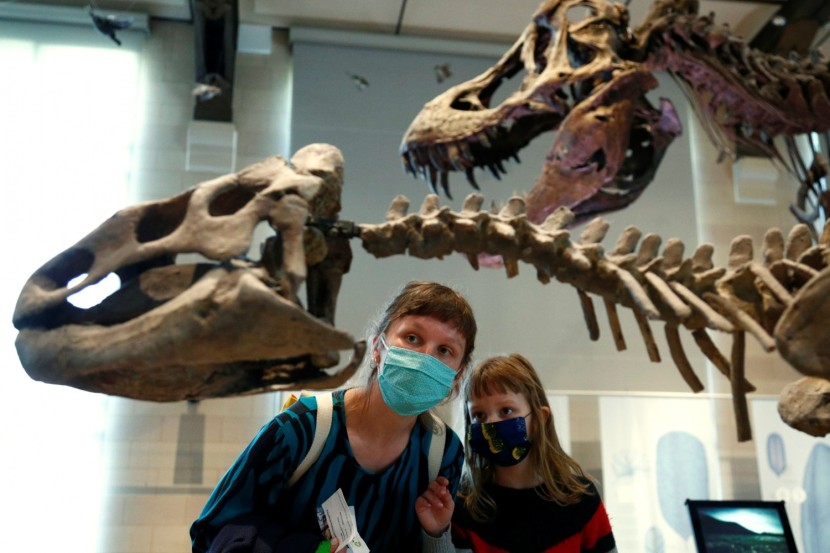
After enjoying the last meal of his life 110 million years ago, a dinosaur became mummified with intact armored plates in its back. We now have a chance to check what is its last meal.
Stomach preservation and evidence of dinosaur's diets are rare cases but there are some instances that remain of seeds and twigs have been discovered inside dinosaur remains, however not to the point that the actual plants can be determined.
But this case is an exception, as a muddy tomb encased preserved the dinosaur unimaginably that even the contents of its stomach still tells us that it was such a picky eater.
According to CNN, on Tuesday a journal published on the Royal Society Open Science, details of the plant-based diet of the dinosaur were revealed.
Brandon University biologist and University of Saskatchewan adjunct professor, study coauthor, David Greenwood shared via email that the fragments of the leaf and other plant fossils were preserved down to the cells.
Also known as the Borealopelta markmitchelli, the nodosaur was discovered in 2011 during a mining operation in Alberta, Canada just north of Fort McMurray.
After the death of the said dinosaur, its remains ended up in a sea, landing on its back directly on the muddy seafloor and has remained untouched until it was salvaged nine years ago.
Since 2017, the remains of the dinosaur has been on display at the Royal Tyrell Museum of Paleontology in Canada. Mark Mitchell, the museum technician, dedicated six years of his life painstakingly revealing the dinosaur's skin and bones well preserved from the marine rock wherein it was encased, and after the years of work, the fossil was unveiled in the museum.
In a report by CBS 46, the fossilized dinosaur is a type of ankylosaur which weighed heavier than a ton, but despite its size, it lived off of plants and chose ferns, based on its stomach's content. The chunk which resembled its stomach is as big as a ball for soccer.
One of the coauthors, geologist, Jim Basinger from the University of Saskatchewan shared in a statement that the discovery of the actual preserved stomach contents from a dinosaur is extremely rare, and this found stomach by nodosaur is the best ever found to date.
He also added that since the public knows the last meal of this dinosaur, it is like bringing the beast back to life as it provides a glimpse of how the animal carried out its daily activities and what is its food preference.
The discovery led to a shred of definite evidence as to what food the herbivorous giant consumes. Plant details in the dinosaur's stomach were excellently preserved that it could be compared to samples taken from today's plants.
Greenwood also pointed out that the stomach remains reveal different layers of cells in a leaf fragment which includes the epidermis with its pores also known as stomata which are responsible for plants' carbon dioxide consumption.
He also mentioned that the pattern of epidermis cells on the surface is visible which is alike on many of today's living ferns.
Related article: European Wasps Beheads Flies, Bullies Large Animals in Australia
© 2025 HNGN, All rights reserved. Do not reproduce without permission.








